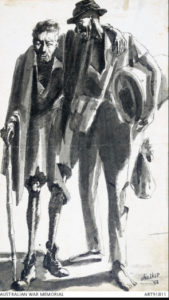6 AUGUST 1945
This morning 8.15 am 75 years ago ‘Little Boy’ was dropped on Hiroshima by US B-29 Super fortress ‘Enola Gray’ flying overhead with a crew of 12 US Army Air Force personnel. ‘Enola Gray’ was one of 7 planes in this project supported by 1770 ground personnel.
Kept apart from the rest of the military the crew had been training in secret for ‘Special Mission 13’ led by Commander & Pilot Lt. Col Paul Tibbits, who selected his crew. (He named the B-29 after his mother). The word ‘Atomic’ was never mentioned during training and briefing.
Such was the secrecy of the Mission 13, it was only after leaving Ninian Island airfields Tibbits informed the crew they are carrying an ‘Atomic’ bomb. The plane had been stripped to accommodate 10,000 lbs. ‘Little Boy’. Flying over Iwa Jima they are joined by a further two planes. Four planes earlier flew over Hiroshima to confirm weather conditions. All planes fly well above Japanese planes.
At 7.30 Tibbets confirmed their target was Hiroshima.
At this moment a false alarm sounded over Hiroshima. However citizens soon continued with their day’s schedule.
The city had not been previously subjected to bombing raids which puzzled it’s citizens leaving them wondering why? Earlier two B-29 incendiary raids over Tokyo in March 1945 had killed 225,000 people. The size of greater Tokyo was about 125,000 sq. miles of which 85,000 sq. miles in the densest area was destroyed.
At 8.12 am Tibbits confirmed their target – the ‘T’ shaped bridge in the city centre and minutes later the plane releases ‘Little Boy’.
Initially there was no reaction. Tibbets thought the bomb was a dud.
‘Little Boy’ falls nearly 6 miles in 43 seconds, exploding 1,968 feet above ground.
Then Hiroshima exploded with a flash. The first shock wave rocked the plane & as ‘Enola Gray’ headed away, the crew was stunned to see the enormous mushroom forming over Hiroshima. The cloud rose to over 60,000 feet in 10 minutes. Hiroshima was engulfed in black smoke.
70,000 people died at Hiroshima.
Three days later on 9 August 1945 ‘Fat Man’ was dropped on Nagasaki resulting in the terrible deaths of a further 40,000 Japanese and thus bringing about Japan’s surrender, the of end of WW2 in the Pacific & Freedom for thousands of POWs in 100s of Japanese camps throughout SE Asia, Japan, Korea, Manchuria.
About 550 former POWs of 2/4th MGB returned to Australia bringing with them diseases and injuries from which they would suffer most of their lives.
They left behind about 400 mates who died and were buried in foreign lands.
Returning home was just the beginning of the biggest battle of their lives.
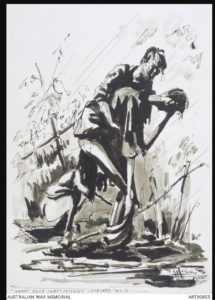
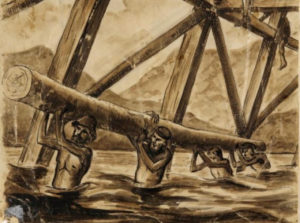
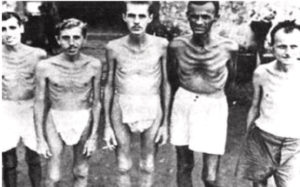
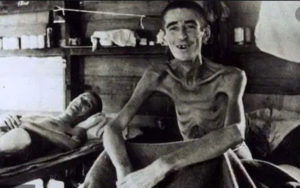
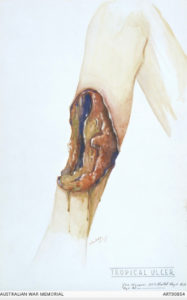
Today in 2020 we look back and realize it was probably not these two atomic bombs which ended the war – but the very real experience of what an atomic bomb can actually do to obliterate a city and its people.
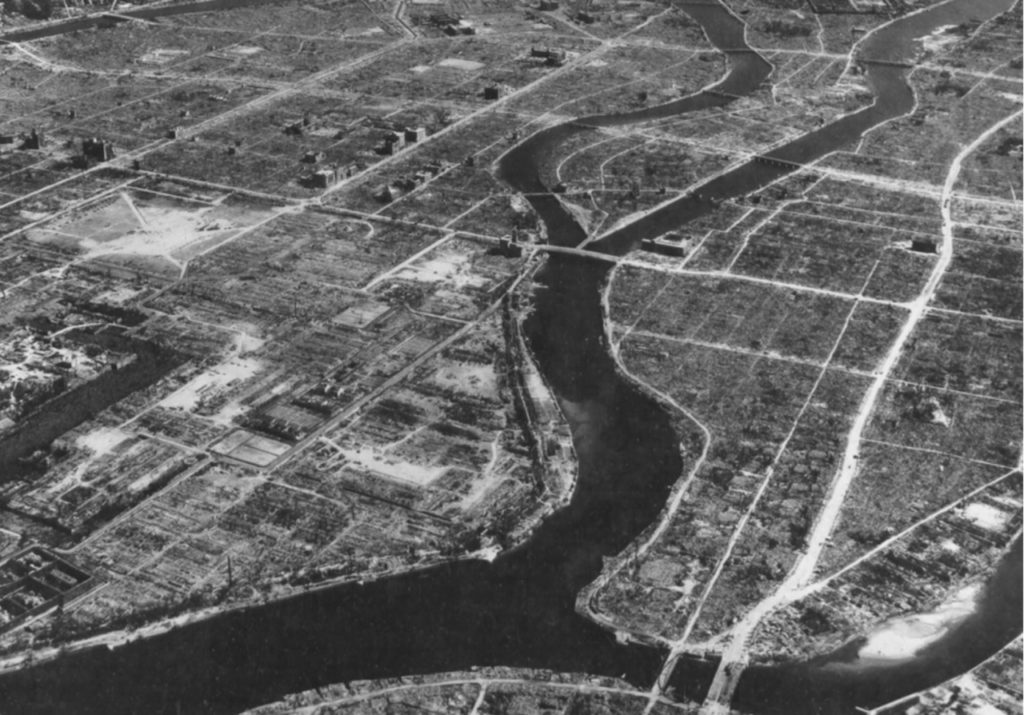

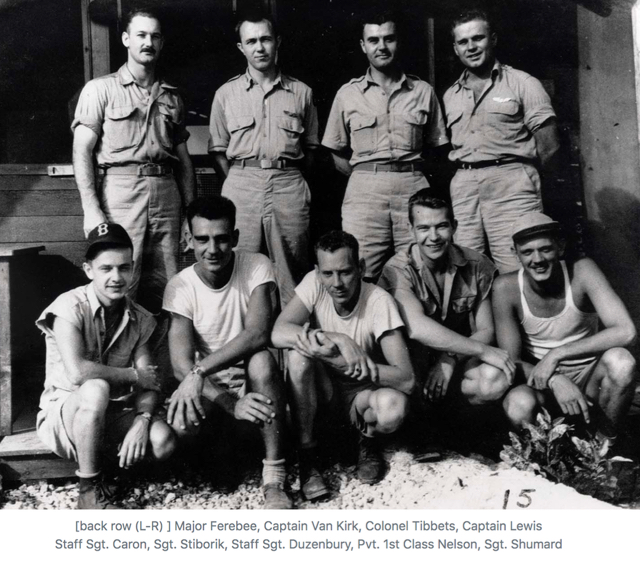
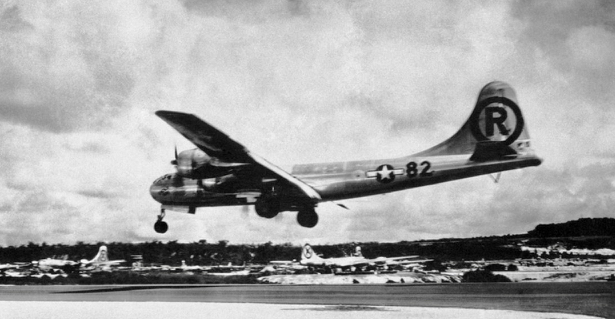
‘Enola Gay’ was named after Paul Tibbet’s mother.
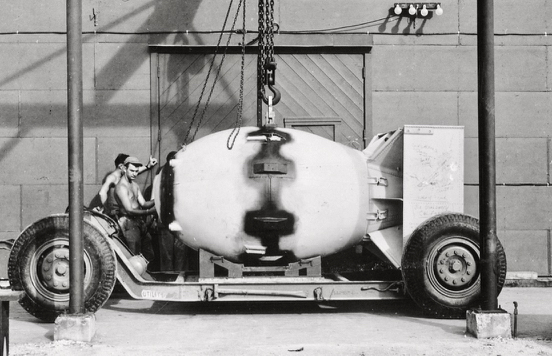
‘Little Boy’
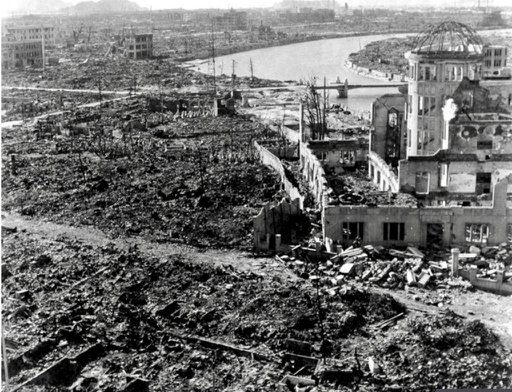
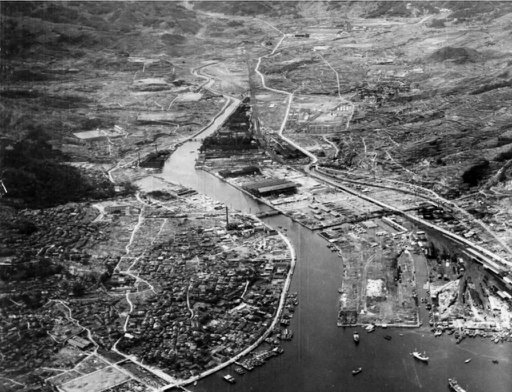
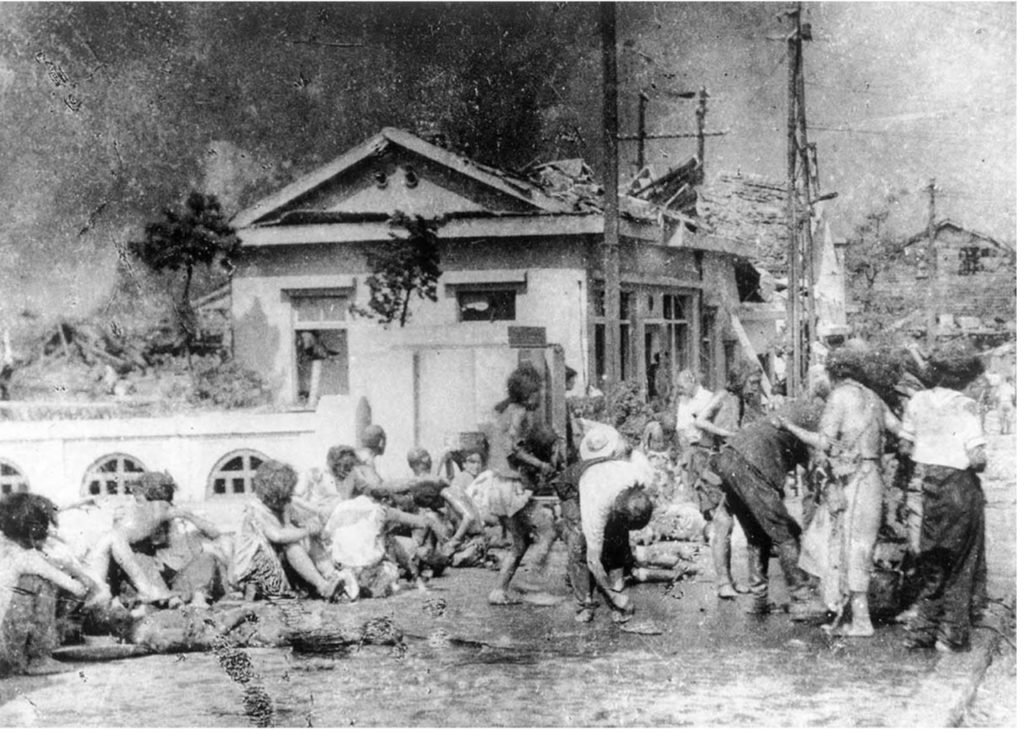
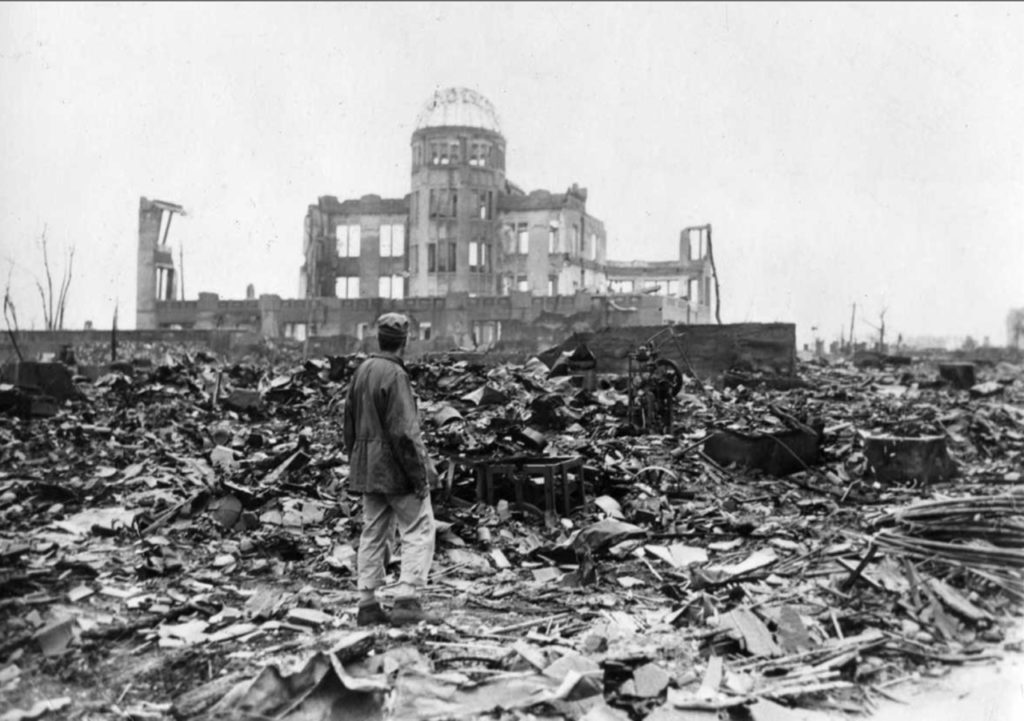
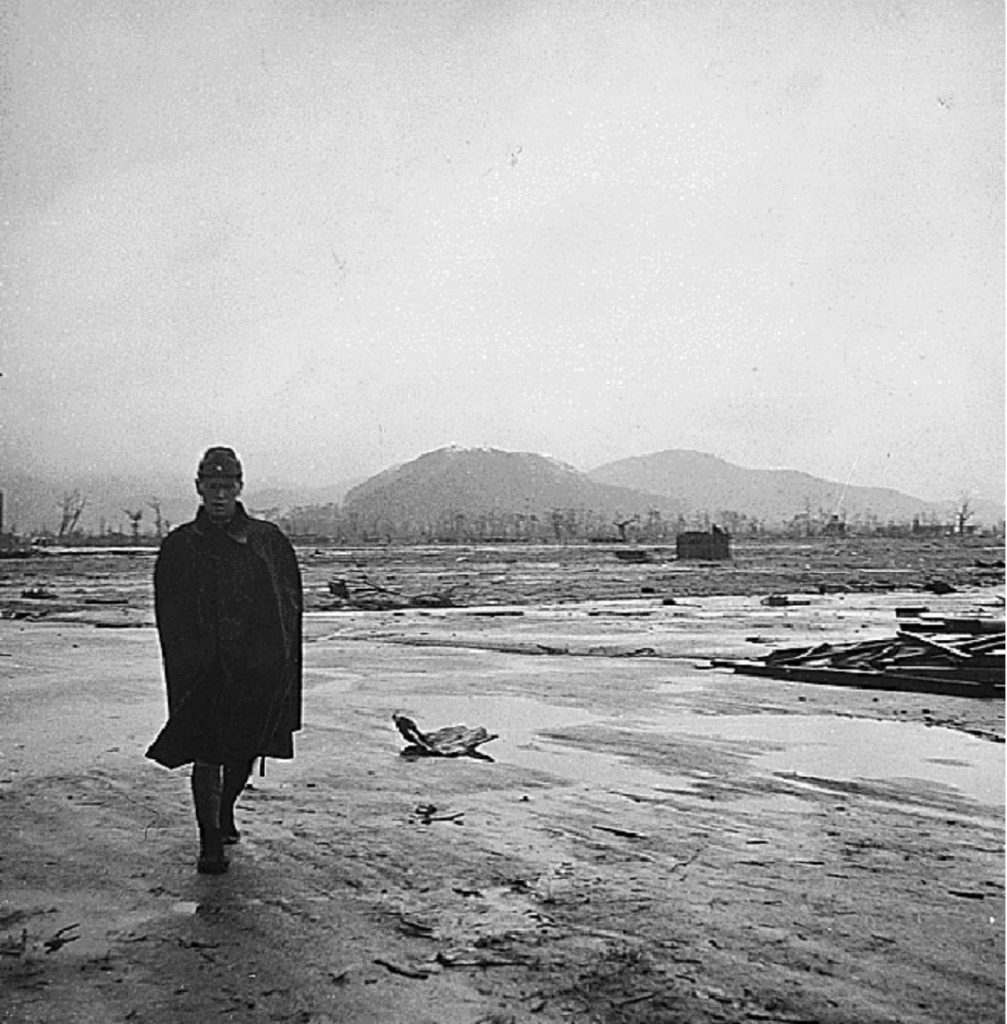
Hiroshima city was built on a flat area surrounded by hills – providing an ideal target for US Military.
The majority of people in Japan did not believe they were defeated even though they had little food and had taken terrible punishment from American air raids they continued to believe Japan was winning. Such was their belief.
The Surrender was never as smooth as we may believe. Although the Japanese Government had surrendered, we know the military did not completely agree.
MacArthur was concerned a revolt against the Japanese Government by millions of former Japanese soldiers could take guerrilla warfare to the mountains assisted by peasant farmers. What would it have taken to quell such event? Millions of Americans soldiers fighting for a decade.
The Japanese Government required time to prepare its people for the Surrender and capitulation There were several weeks before Allied occupation began 2 September.
As to the number of people killed at Hiroshima and Nagasaki – the Japanese government did not have precise knowledge of the population of both cities before the bomb. Likewise the number of people who returned after.
There was no way a precise figure could be put on the mortality rate.
16 hours later the American Government acknowledged it was an atomic bomb dropped on Hiroshima. In response the Japanese Government sent a scientific team to take measurements and to either confirm or refute the American claim.
Those on the ground had no way of knowing a single plane and one bomb had been responsible for the terrible carnage, smoke and fires.
The flight crews of ‘Enola Gray’ and accompanying craft were unable ascertain the extent of damage on the ground because of the smoke; the Americans scheduled further overflights to seek photographic evidence of the effectiveness of the bomb.
‘The Night of the Black Snow’
The was the name Japan gave to March 8th and 9th, 1945 when Tokyo was subjected to firebombing raids by US codenamed ‘Operation Meeting House’ leaving one million people homeless.
The devastation of Tokyo is today suggested to have been one of cited as one of the most destructive acts of war in history, more destructive than the bombing of Dresden, Hiroshima, or Nagasaki.
Beginning on the night of 9 March 1945 warplanes began dropping 2,000 tons of incendiary bombs on Tokyo. This lasted for the next 48 hours.

